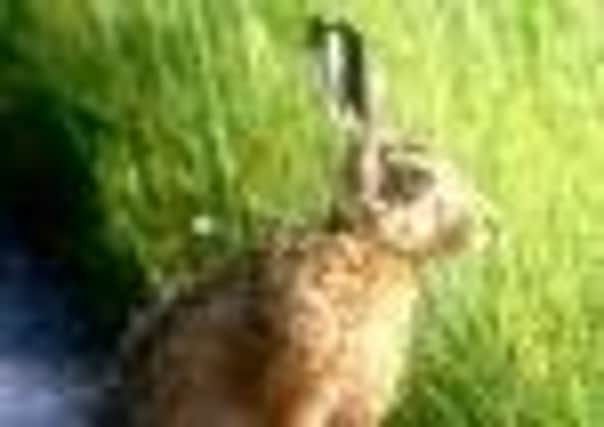Burnley and Pendle nature lovers asked to join in hare search


The hare has seen a massive decline in the county over the last century but there are plans to reverse the situation.
And experts are calling on the public to report any sightings of hares so that a real picture of the population can be created.
Advertisement
Hide AdAdvertisement
Hide AdLancashire is a North West stronghold for the hare with an estimated 18,000, around two per cent of the national population.
But that figure is a fraction of the number of hares recorded in the early 1900s. The decline has come as farming methods have changed and predators, like the fox, have increased.
Hares were believed to have been introduced into England 2,000 years ago by the Romans but new evidence has uncovered that they could have been around before the Ice Age.
Hares are easily distinguishable from rabbits because they are large, more streamlined, with larger back legs and feet and large ears which stick straight up from their heads.
Advertisement
Hide AdAdvertisement
Hide AdLancashire Biodiversity Partnership’s Sarah Stone said: “Over the last century the brown hare population, in Britain, has declined by around 80 per cent. Surveys carried out during 2010 on the brown hare population density in Lancashire has estimated 5.8 hares per square kilometre putting Lancashire’s estimated population at two per cent of the current national hare population, in line with the area of the county.
“The highest proportion of brown hares was found on arable areas, with smaller populations found on upland edges, and healthy populations on the West Pennine Moors and Forest of Bowland.”
Lancashire Biodiversity Partnership is working to improve areas already inhabited by the hares and then link these areas so they can breed with animals from other areas.
Dr Tim Graham, Lancashire Biodiversity Partnership Manager, said: “This is a good time of year to see them because vegetation is down. We need people to tell us if they see hares and give us a grid reference. That is important so that we can pinpoint exactly where the hares are.”
Advertisement
Hide AdAdvertisement
Hide AdMore information can be found at www.lancspartners.org/lbap and brown hare sightings can be entered at www.merseysidebiobank.org.uk/BrownHare/simpleentry.aspx
Anyone seeking guidance on recording in the county can contact the Lancashire Environment Record Network at [email protected].